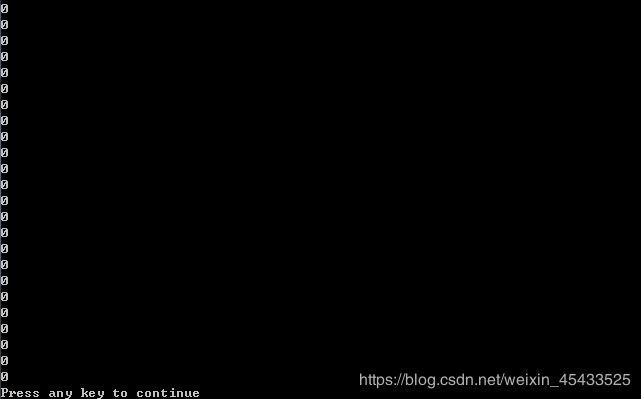C++考研复试题集合
1.名词解释
(1)函数对象
(2)类模板
(3)动态绑定与静态绑定及异同点
先了解什么是多态,多态是指同样的消息被不同类型的对象接受时导致不同的行为,从实现角度来讲分为编译时的多态和运行时的多态,前者是在编译的过程中确定了同名操作的具体操作对象,而后者是在运行过程中才动态确定操作所针对的具体对象,这种确定操作对象的过程就是绑定,就是把一条消息和一个对象的方法相结合的过程,前者是静态绑定,后者是动态绑定,也叫晚期绑定或后绑定。只有虚函数实现的是动态绑定,其它全部是静态绑定。
(4)容器
(5)解释protected的意义和用途
protected关键字声明的成员只能由继承派生类访问,本类外无法访问。
(2)类模板
(2)类模板
(2)类模板
2.简答题
1.复制构造函数是什么?何时调用?系统自动调用默认复制构造函数会出现什么现象?自定义复制构造函数有什么用?
复制构造函数具有一般构造函数的所有特性,其作用是使用一个已经存在的对象去初始化同类的一个新对象。在三种情况下被调用:一.当用类的一个对象去初始化该类的另一个对象时;二.如果函数的形参是类的对象,调用函数,进行形参和实参结合时;三.如果函数的返回值是类的对象,函数执行完成返回调用者时。默认的复制构造函数实现的是对象间元素的一一对应复制,但是当类的数据成员含有指针时,会将指针也复制过来,这使得两个对象指向同一个内存地址,表面是好像完成了复制,但是实际上待复制对象并没有产生自己真正的副本,这就是所谓的“浅复制”。“浅复制”的危害是,当我们要释放动态申请的内存时,由于两个对象的指针成员均指向同一个地址,会导致同一内存地址被释放两次,造成内存泄漏。因此我们引入“深复制”概念,即我们自己显示定义复制构造函数,确保不会出现不同指针指向同一内存地址的情况。
2.举例说明C++异常处理机制
异常处理的目的是,允许用户排除环境错误,继续运行程序。
#include 结果:
8/2=4
8is divided by zero
That is ok.
如果始终没有找到与被抛掷异常相匹配的catch子句,最终main函数会结束执行。
3.程序分析
1.全局和主函数局部变量
#include 2.文件输出流,复制构造和析构函数
#include 运行结果:
test1:oCount=1
x in f():oCount=1
~HM():oCount=0
test2:oCount=0
~HM():oCount=-1
~HM():oCount=-2
3.多态
#include 4.常类成员
class X{
int a;
public:int func(void){
return a++;
}
};
class Y:public X{
public:void set(int c){
this->a=c;//a是类X的私有数据成员,类Y是无法访问的,所以这里错了
}
int describe() const{//应该去掉const,因为常成员函数不能更新目的对象的数据成员
return func();
}
};
5.运算符重载
#include 修改后:
#include 6.定义一个堆栈类模板
#include 7.调用形参为引用的函数
#include刚刚看了一遍清华的C++引用课程,有几个点:
(1)引用必须在定义时直接初始化,不能先定义之后再初始化,引用是不可更改的。
(2)函数在调用时候才会给形参分配内存空间,也就是调用之前函数内的局部变量不存在。
综合这两个点知道,在函数调用时才会给形参分配存储空间,那么当函数调用时,这个引用t才被创建,然后立即用实参对其进行初始化,也就是上面写的&t = a;这个操作。也就是在形实结合的时候,这个引用才被定义。
#include

